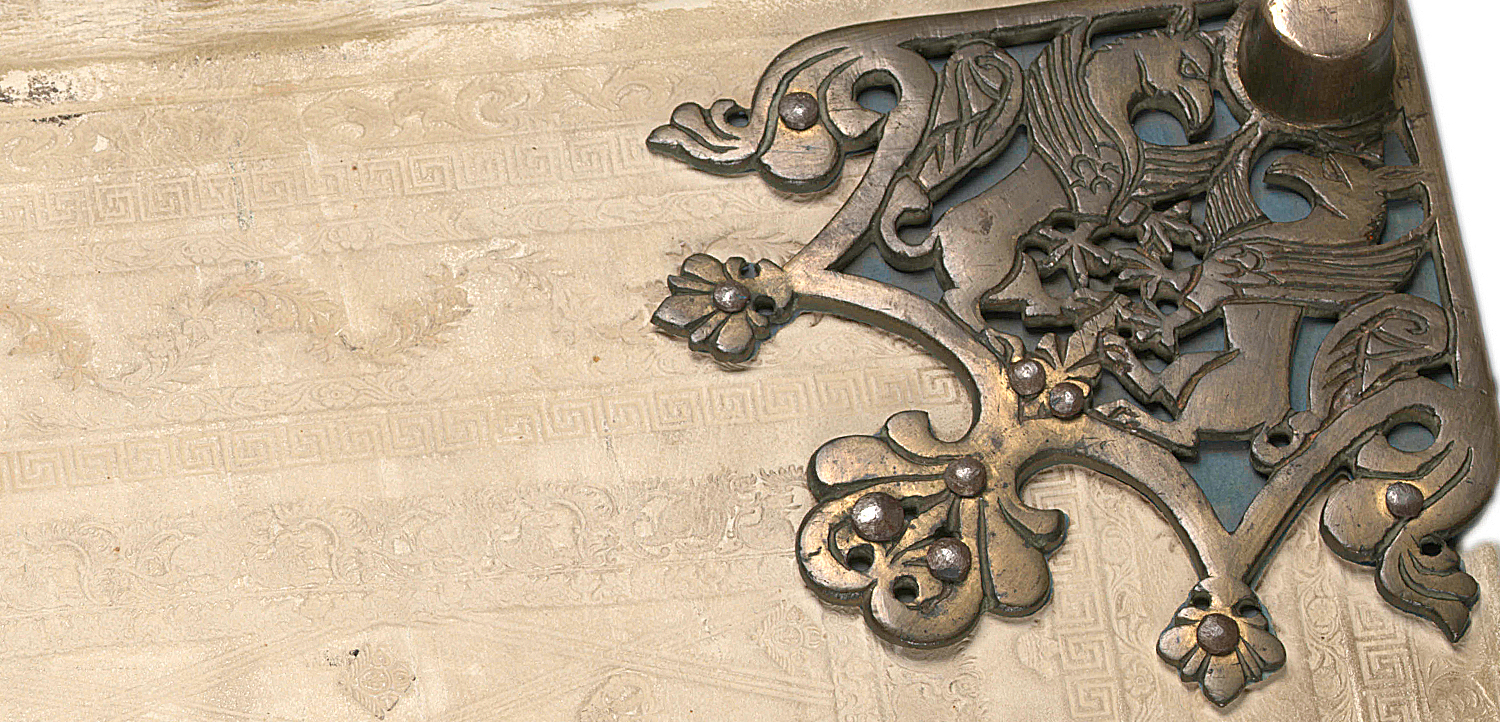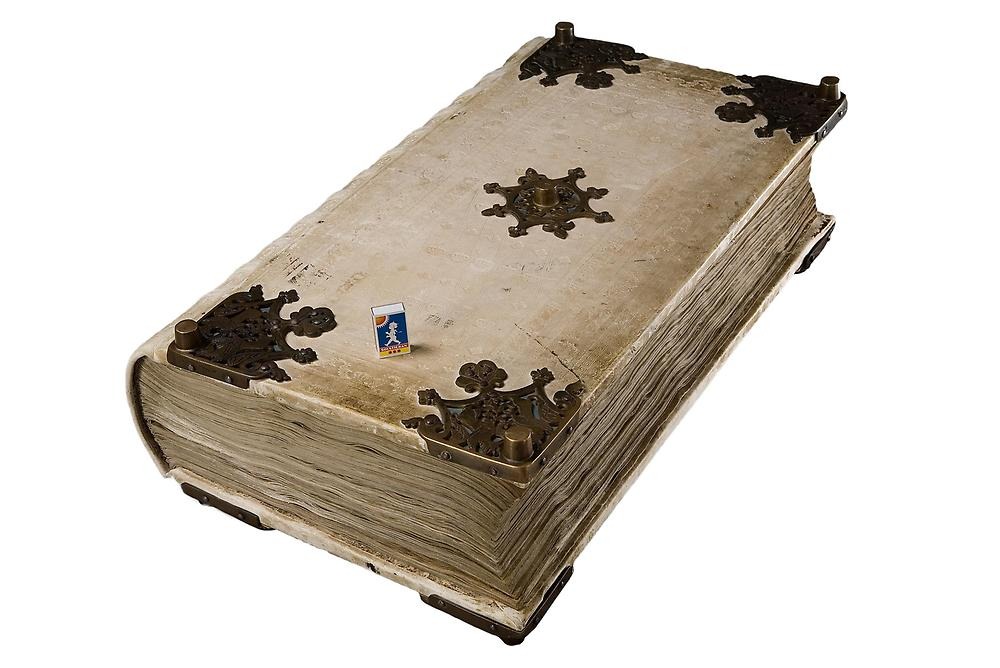Appearance of the Codex Gigas
The Codex Gigas weighs 75 kilos and has 310 parchment leaves, probably made of calfskin.
Record-breaking manuscript size
The leaves are 89 centimetres high and 49 centimetres wide, which probably makes the Codex Gigas the world's largest preserved medieval manuscript. The leaves originally measured about 90 x 50 centimetres – a centimetre or so has been lost in both dimensions due to re-trimming of the manuscript. The leaves are numbered with ink in the middle of each recto page (right page). This was probably done in the 17th century, perhaps after the manuscript's arrival in Sweden.
White leather bindning
The manuscript is bound in one volume, with thick wooden boards and a covering of white leather. The boards are decorated with blind stamps, of which the most prominent is a crown. None of these stamps has been found elsewhere.
Ornate fittings
Both boards also have metal fittings – four corner fittings and a centre fitting. The corner fittings are adorned with two griffins each. Each fitting has a raised button that the book was meant to rest on. There are two additional fittings on the back. These fittings have a raised part with a hole that may have been used to chain the Codex Gigas to a piece of furniture.

Corner fitting with griffins.
The current binding
In 1819, the manuscript was furnished with its current binding by a bookbinder in Stockholm by the name of Samuel Sandman. He received a total of 78 riksdaler (the old name for the currency of Swedish crowns, SEK) for materials and labour. For comparison, a cow cost 45 riksdaler at the time. The wooden boards are probably from the original binding, which was made shortly after the manuscript’s completion in the early 13th century.

